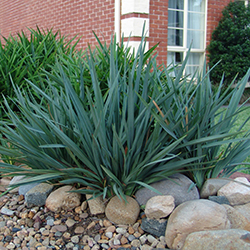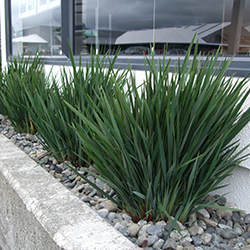By Todd Layt
Installing new gardens is easy if the planting is done in Autumn and Winter. Australians are returning to gardens in many areas after good summer rains. In many regions across Australia the summers can be brutal for gardeners. In either case, planting when weather is cooler, and there is a considerable period of cooler weather ahead simply makes sense.
Planting in April, May and June for most regions, provides exactly that. Obviously, very frost sensitive plants may have trouble, particularly if planted in June in cooler areas. So first it is smart to choose plants that can cope with cooler month installation. Most plants can. Some plants really benefit from planting at this time, particularly if the following summer is really hot. For example Cordylines and Phormiums, in Sydney, Melbourne, Adelaide and Perth should be planted by September at the latest. Even better, if they are planted in Autumn, a more mature size will help them make it through the hot summer. Some types of summer friendly installation plants, such as Lomandra and Dianella, and many native shrubs and trees, still benefit from Autumn planting.
Firstly, planting in the cooler months requires far less establishment watering. In fact if you wait for the ground to be wet from rain, in many regions little follow up watering will be required. Many large scale revegetation projects are planted in Autumn after rain. Tough plants are used, and after planting, it is common practice in many regions to have NO FOLLOW UP WATERING at all. Another benefit of planting new gardens, or replanting old ones in the cooler months, is that it gives the plants time to establish before they get inundated by an abundance of weeds. Weeds grow much faster in warmer weather. Using chunky mulch also helps keep weeds down. Avoid using mulches that have lots of fine particles in them, as they act as potting mix, providing a great medium to germinate weed seeds.
When planting at any time, it is a good idea to mix in to the ground around and under the plant an 8 to 9 month slow release fertiliser. This will help a little in Autumn, and then into Spring, and at the beginning of summer. These types of slow release fertilisers are often not released in Winter, so if you want more growth in winter, or the end of Autumn, it is worth applying an occasional liquid feed. Be careful not to pump cold tender plants with too much fertiliser.
Planting in Autumn is a wonderful, pleasurable time to plant. The heat has gone from the air, making it far more comfortable. The ground is moist and easier to dig. But most importantly, it is the best time. Install in April or May, and the plants have 7 months to grow and get its roots deep before the heat of Summer. Install in October and the plants only have 2 months before the heat of summer.
Planting in cooler climate zones, or frost prone areas in late Autumn or Winter is much easier today then in years gone by. Today, there are many evergreen cold tolerant and drought tolerant plants to choose from. Lomandra plants such as Tanika, or Katrinus Deluxe stay evergreen in winter, even if planted in Canberra, as do Dianellas such as Little Rev or Cassa Blue. Native grasses such as Poa types, including Kingsdale, and Eskdale, love being planted in winter. Even laying turf in winter has got easier. Palmetto is an amazing drought tolerant Buffalo Turf that in most regions stays evergreen. In Sydney, Adelaide, Brisbane and Perth, Palmetto is the best choice for winter turf installation. In Melbourne it is best to plant Palmetto turf in Autumn, Spring or Summer, unless you top dress the turf after laying in Winter. Cooler times are the best time to install gardens and turf, but remember one piece of advice; summer will come eventually, so choosing drought tough plants and turf is still a good idea.


